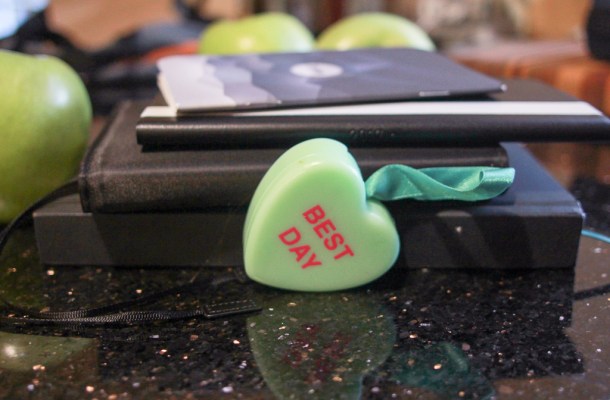Keeping on track is hard. Over the years I’ve tried a number of personal information managers – PIMs, for short – from the original Palm V to my current iPhone/iCal/Vyte/phone tag method of making sure I’m in the right place at the right time.
It rarely works.
Something is always dropping out. An appointment added a week ago disappears while old appointments reappear on a whim. I get exasperated calls from people I’m supposed to meet – “I’m standing over the trout tank you told me to stand by!” – and I have to scramble to get out of the house. In short, my online/offline scheduling life is untenable.
In an effort to figure out a better solution I turned to old-fashioned pen and paper. I tried out four time-management solutions and I’ll talk about each one in detail – and pick the best one.
The Contenders
[gallery ids="1506382,1506381,1506376,1506377"]
Hobonichi Techo Planner 2018 A6 – $33 – A bigger brother to the Hobonichi I reviewed below this English-language planner includes a full graph-paper page per day as well as fun quotes about entrepreneurship, achievement, and design. A bit thicker, the notebook is aimed at journal-users who might want to draw or sketch on a particular page in addition to adding notes for the day. The big pages and easy-to-read design make it a unique addition but it’s just a bit thicker and bigger than I’d like.
[gallery ids="1506389,1506374,1506390,1506375,1506378"]
Ink+Volt – $40 – This dated planner is almost overkill. The system consists of multiple monthly and weekly calendars as well as goal sheets including spaces for 31-day challenges and reflections on your week. The product is more like a journal than a planner in that regard but the huge dated pages are quite useful when you want to see your week at a glance. My wife has started using this book on a daily basis as a to-do/calendar and you can ignore the inspirational pages if you don’t want to tell your planner how you’ll improve your soul in the next month.
The entire package is quite impressive and the company sells monthly updates to their book, ensuring that you never have to buy an outdated version with January right around the corner. The current August model is sold out but they also sell undated books.
[gallery ids="1506388,1506383,1506385"]
Word Notebooks – $9.99 for three – These small notebooks come in multiple styles – from plain grey to a swirling galaxy of color – and are quite simple. The pages consist of lined paper with a little circle on the left side. You write in your to-do list on the lines and then mark things important by circling the circle, in progress by adding a single slash, and done by crossing out the circle. That’s it.
This is obviously not a planner in the traditional sense and is more like an amped-up to-do list. If, however, you’re looking for something simple and easy to carry, the Word is a good choice. I like the simple system and the slim, 3.5” X 5.5” size. I think it’s a solid improvement over the old getting-things-done single page to-do list method and I like that you get three per package. I’ve carried a Word for a few months now and it’s become a useful little tool.
[gallery ids="1506392,1506393,1506380"]
Hobonichi Techo Weeks – $18 – This ultra-slim, ultra-compact weekly planner is one of my favorites. It’s a no-nonsense planner with a weekly view on each page and a set of graph paper and informational pages at the end. Most of the planner is written in Japanese – the included Japanese metro map gives you a clue that this isn’t for a US audience – but the elegance and usability makes it a favorite. This little book has everything you need for the year in a package that is about as big as a bigger cellphone.
I’ve grown to really like this series and it’s the one I reach for the most in my crowded bag.
The Favorite(s)
Need something dead simple? Go for the Word. It’s now my go-to notebook. Need something a little more complex? The Hobonichi Techo Weeks is my favorite first for its simplicity and size and second for its usability. The Ink+Volt was a little too dense and complex for my taste although the cute and helpful little asides – what do you want to achieve this month? – are interesting. The bigger Hobonichi notebook was also a solid choice but it’s not nearly as portable and I found myself wanting to use these notebooks as to-do lists rather than fully fledged journals. The bottom line? If you’re looking for something simple, stick with the Weeks or the Word. If you need something with a little aspirational additive then check out the Ink+Volt. Your day and your brain will thank you.
